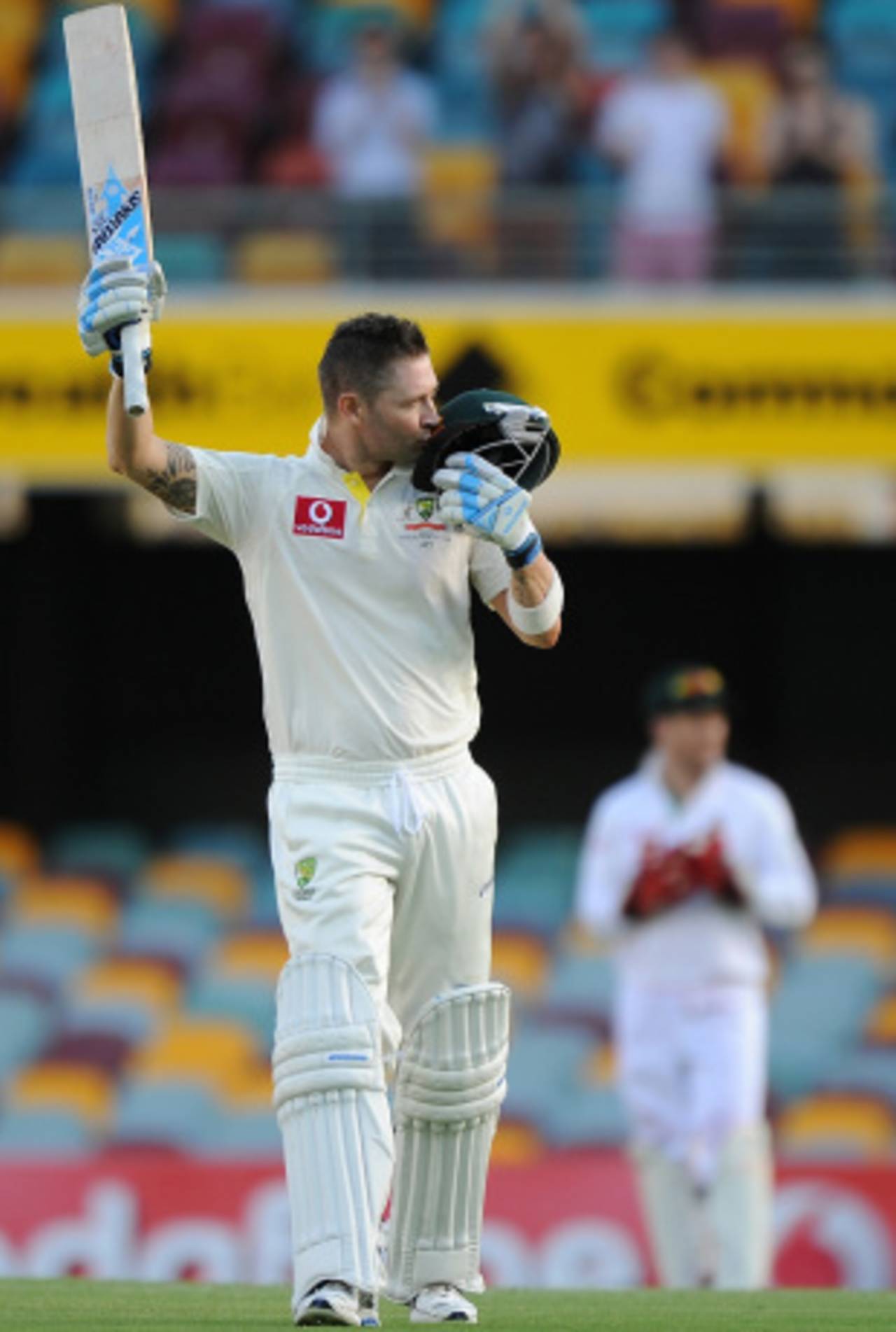Bodyline first flared in Douglas Jardine's mind at the
Oval Test match in 1930, when he saw Don Bradman flinch at several short balls on a wet wicket. Bradman always retorted quite reasonably that the innings in question only ended when he was wrongly given out caught behind having made 232. But Jardine trusted the evidence of his eyes, and his memory of Bradman's momentary discomfort bloomed into calculated and effective action, however unpopular.
Michael Clarke is no Bradman, and the Gabba pitch was far from damp. Yet Clarke can expect a more sustained barrage of short-pitched bowling from South Africa in Adelaide after long swathes of his unbeaten 259 in Brisbane were curiously allowed to pass without resort to a tactic that caused Australia's captain considerable discomfort early in his innings.
Churlish as it may be to criticise a batsman who peeled off his third score of more than 200 for 2012, the fact remains that Clarke struggled in his play against bouncers at the Gabba. Two attempts at half-hearted pull shots from the bowling of Rory Kleinveldt landed tantalisingly out of the reach of fielders, while Clarke's difficulty in trying to duck underneath short balls caused him to throw his gloves at several of them in self-preservation, one delivered by Dale Steyn looping fortunately between the batsman and the slips cordon.
Why South Africa more or less abandoned the tactic as Clarke's innings bloomed in the company of Ed Cowan then Michael Hussey is one of the first Test's major mysteries, and can perhaps be put down to the bowling's collective lack of thought after the early gains of the new ball were turned back by Australia's counter-attack. Only once all innings did Clarke reach the boundary with anything resembling a pull shot, swinging Steyn over wide mid-on when given room outside off stump.
But most other times Clarke's usually organised footwork and crisp ball-striking were absent when the bowlers fired the ball at his body or helmet, and his somewhat ungainly attempts to get under bouncers illustrated the kind of inflexibility created by a back condition Australia's leader has had to manage since his teenage years.
Clarke was helped by the fact that both Cowan and Hussey are exemplary players of the pull shot, as befits a pair who have spent significant stretches of their respective careers batting at the top of the order. Cowan's willingness to play the stroke early on against Steyn was an important moment in the match, and it is possible that the comfort he and Hussey showed in their cross-bat shots left South Africa reticent to pitch short in any case, even after Clarke had shown markedly less enthusiasm for it.
Morne Morkel is perhaps the best equipped of South Africa's pacemen to challenge Clarke with short-pitched offerings, though Steyn's skidding bumpers are also of sufficient velocity and direction. On an Adelaide surface that may offer some early life before flattening out and then deteriorating to offer variable bounce late in the match, the short ball appears a more likely path to defeating Clarke than pushing the ball up to the bat in the hope of an edge.
"Any batsman at first struggles with the short ball," Morkel said when quizzed about Clarke's handful of awkward moments in Brisbane. "We'll probably sit and come up with game plans today, start working on those sort of things. Definitely, that is a plan to use the short ball. Because you've got two per over, you might as well use that, but you have to do it in a clever way and we will go from there."
Clever is one way of describing Jardine's tactics 80 years ago, and a key to their success was the sustained nature of the assault. If South Africa truly wish to curb Clarke's strokeplay at Adelaide Oval they will need to attack him with greater clarity of purpose, and force him into playing shots that he did not seem terribly keen to employ in Brisbane.
